The regime in Iran has developed a complex shadow-financial infrastructure: what might be called “shadow banking” networks that operate outside the formal, transparent banking system and help Iran to move money, evade sanctions, and fund strategic priorities. This is not simply a niche regulatory concern, it has broad implications for global finance, sanctions enforcement, trade compliance, and geopolitical risk.
The policy analysis by The Washington Institute titled “Iran’s Shadow Banking System and Its Role in Terrorism Finance” was a key starting point: it highlights that these networks are being used to fund activities subject to sanctions, including weapons procurement and support for proxies. Using that as our anchor, this article expands with recent regulatory, enforcement and crypto-industry insights to paint a fuller picture.

Defining “shadow banking” in the Iranian Context
In conventional usage, “shadow banking” refers to financial intermediation outside of the regulated banking sector, non-bank entities doing bank-like activities (credit intermediation, payments, currency exchange) often under less oversight. In the Iranian case, the term takes on a specific meaning: networks of exchange houses, front companies, shell entities, offshore banks and informal value-transfer systems that bypass Iran’s formal banks (which are heavily sanctioned) in order to move value (funds, goods, services) internationally.
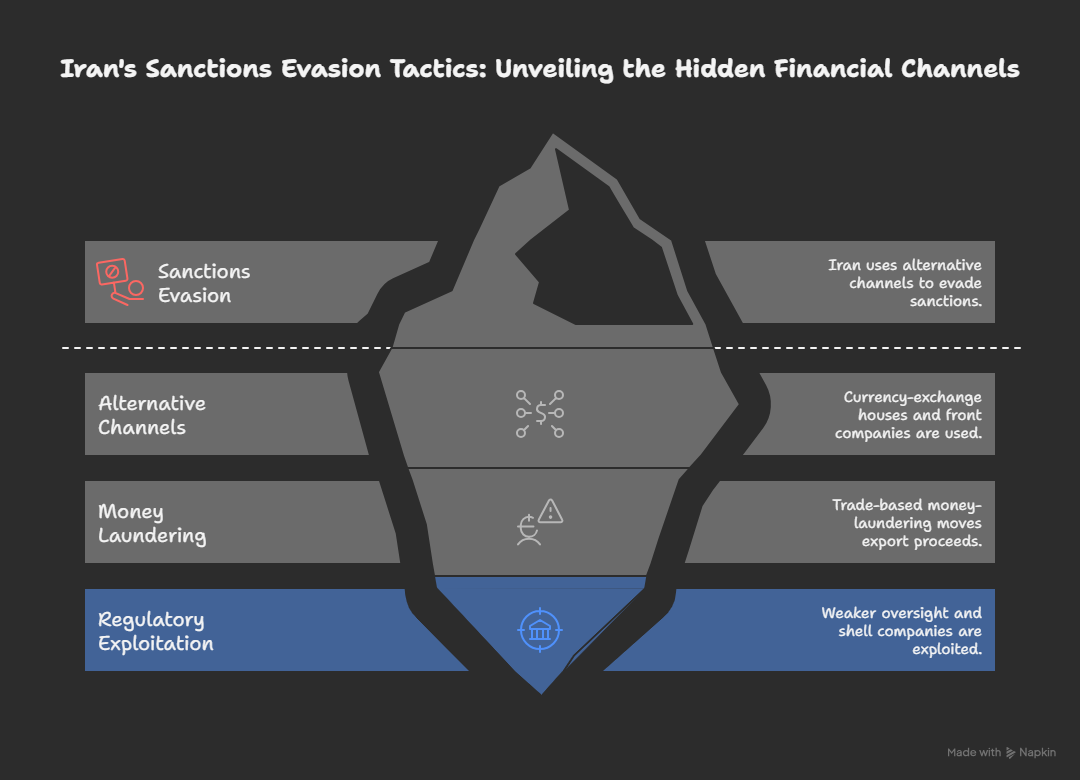
How it works in practice
#1 Revenue generation and export proceeds
Iran generates revenue (oil, petrochemicals, other exports) that it needs to export and convert into usable currency (foreign currency, USD, etc.). Because many formal paths are blocked, the regime uses clandestine export mechanisms and then covert value-transfer networks to move proceeds abroad or repatriate value in a way less visible. For example, the Financial Crimes Enforcement Network (FinCEN) states that Iran uses third-country exchange houses and trading companies to achieve this: “Another model used by Iran to evade sanctions and access the U.S. financial system is through third-country exchange houses and trading companies… The dollars are then delivered … to facilitate movement of commodities like oil or the procurement of sensitive dual-use goods.”
#2 Multi-jurisdiction laundering, trade-based evasion
The pathway often involves: Iranian exchange house → Shell company in UAE/HK etc → Offshore bank account → Third-country trade transaction → value flows back in kind or cash. The regime uses trade-based mechanisms (false invoices, over/under-valuation of goods, mixing sanctioned goods with non-sanctioned goods) to disguise the origin/destination of funds. The June 2025 FinCEN advisory provides typologies of this.
#3 Use of cryptocurrencies and non-traditional channels
While the majority of illicit financial flows linked to Iran still rely on conventional trade-based mechanisms, as mentioned before, cryptocurrencies are increasingly used as a bridge between jurisdictions and as a conversion layer when access to foreign currency is restricted.
The appeal is clear: digital assets operate beyond traditional correspondent-banking systems, offering faster settlement, global accessibility, and a perception of anonymity.
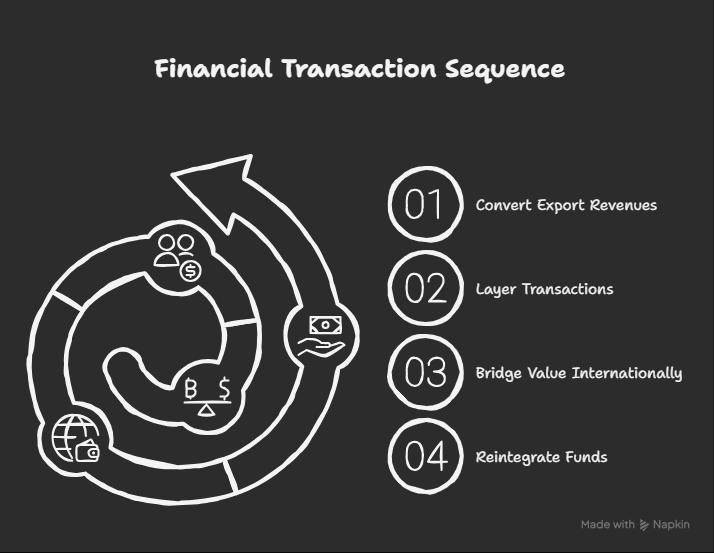
Recent U.S. Treasury designations (September 2025) described Iranian networks that coordinated large-scale cryptocurrency transactions on behalf of the regime’s oil-export apparatus, using digital assets to settle deals and mask beneficiaries. These cases demonstrate how crypto now complements the traditional shadow-banking ecosystem rather than replacing it, serving as a flexible intermediate rail that connects sanctioned entities to the broader global economy.
Wallets linked to OFAC designation (SB0248)
Arash Estaki Alivand
Wallet ****bca5

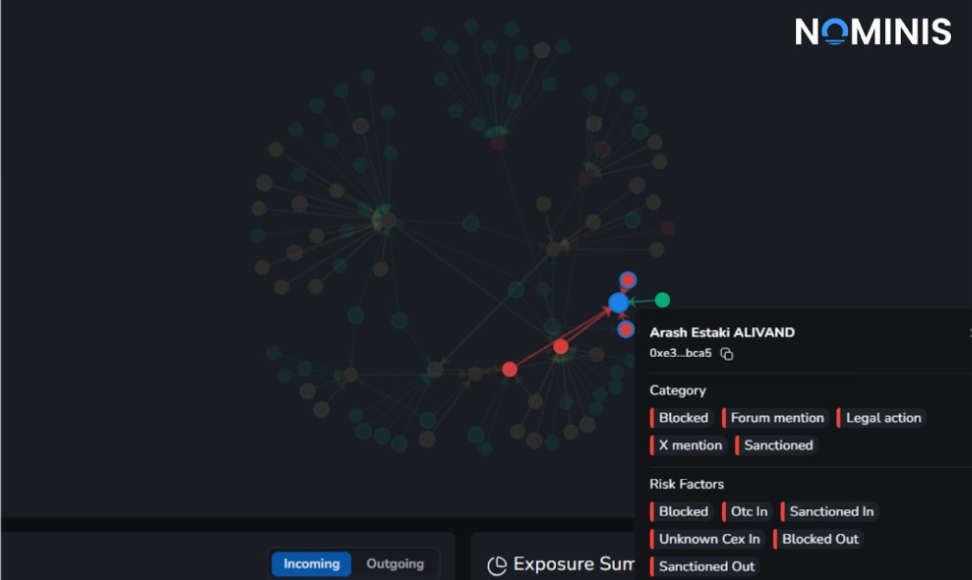
Wallet ****0e8a
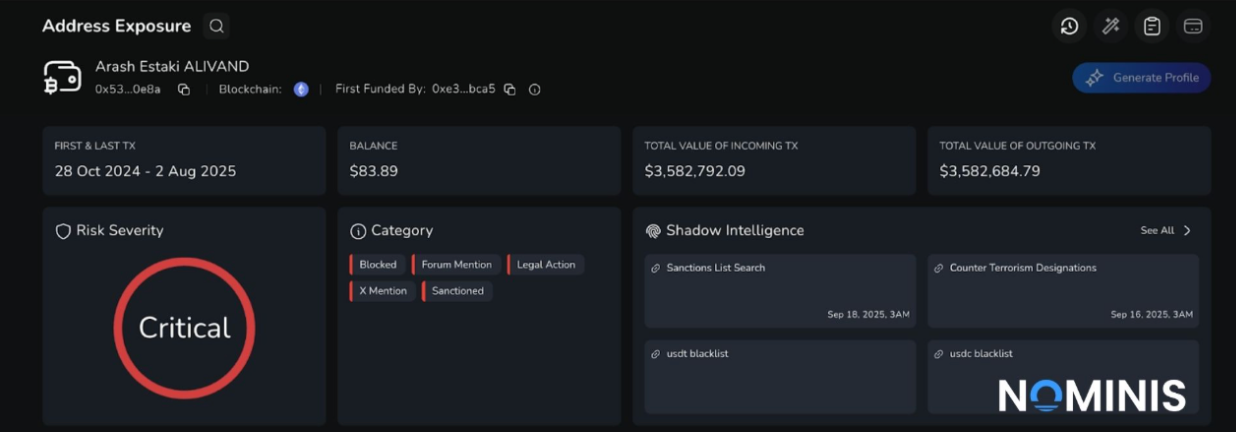
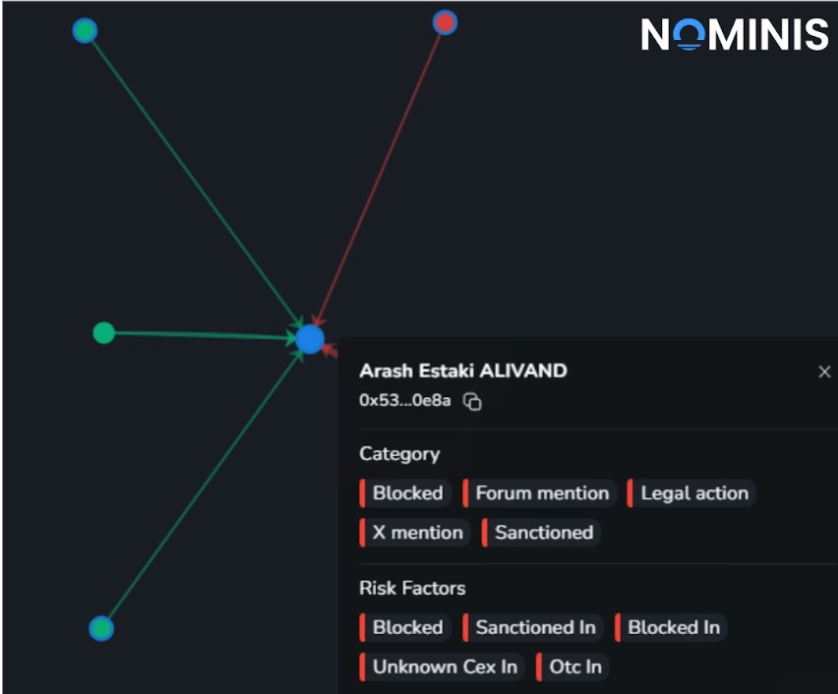
Wallet ****q9QZ
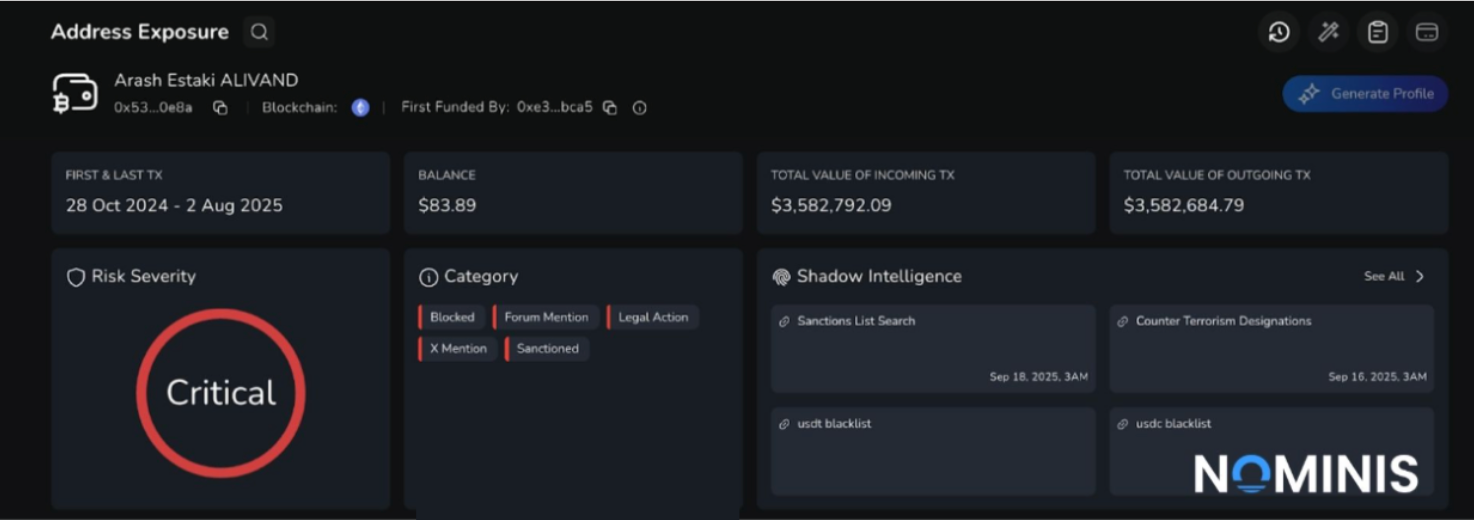

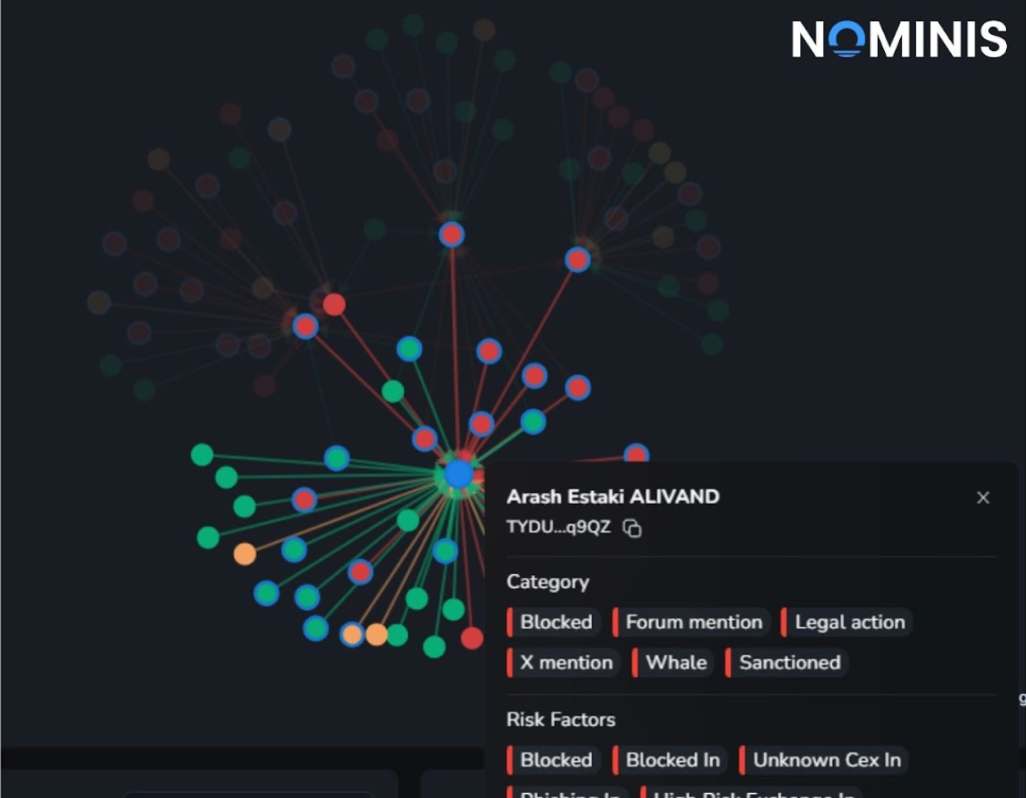
Wallet ***ZWFN

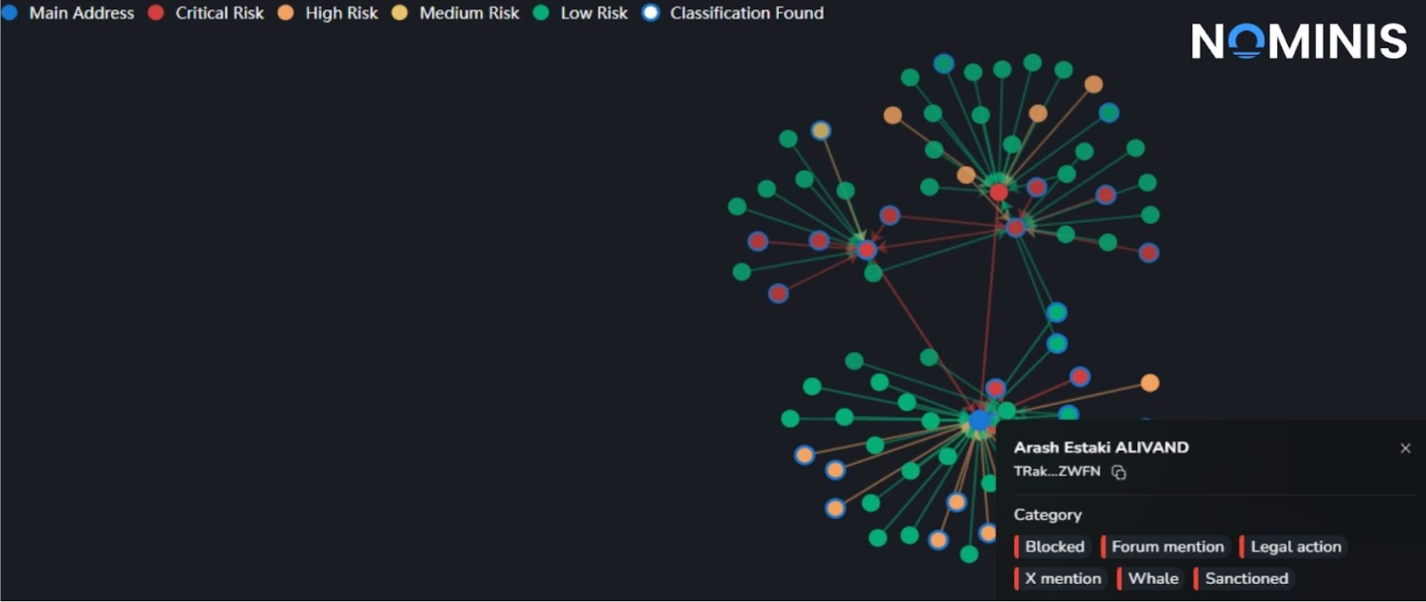
Alireza Derakhshan
Wallet ****a8fe
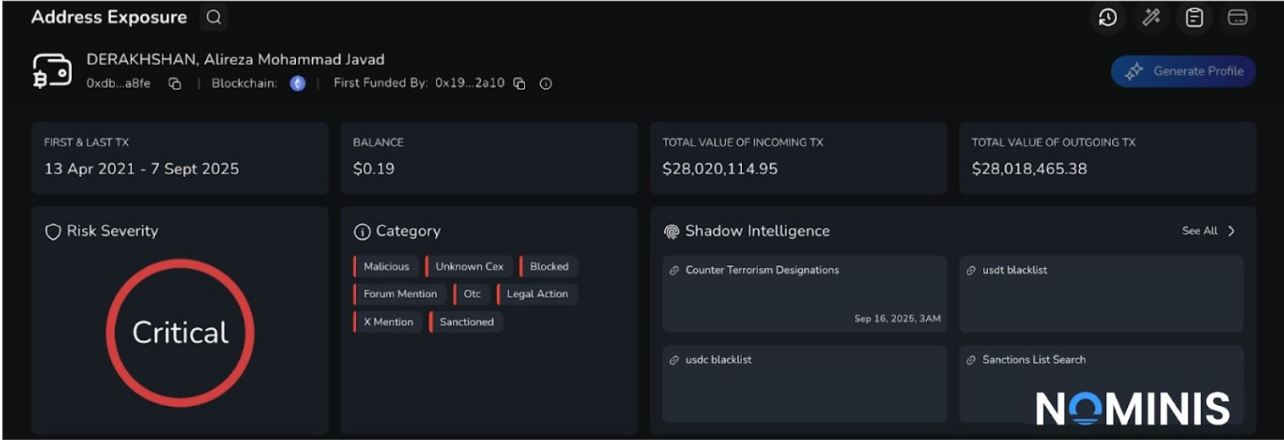

Wallet ****ojz
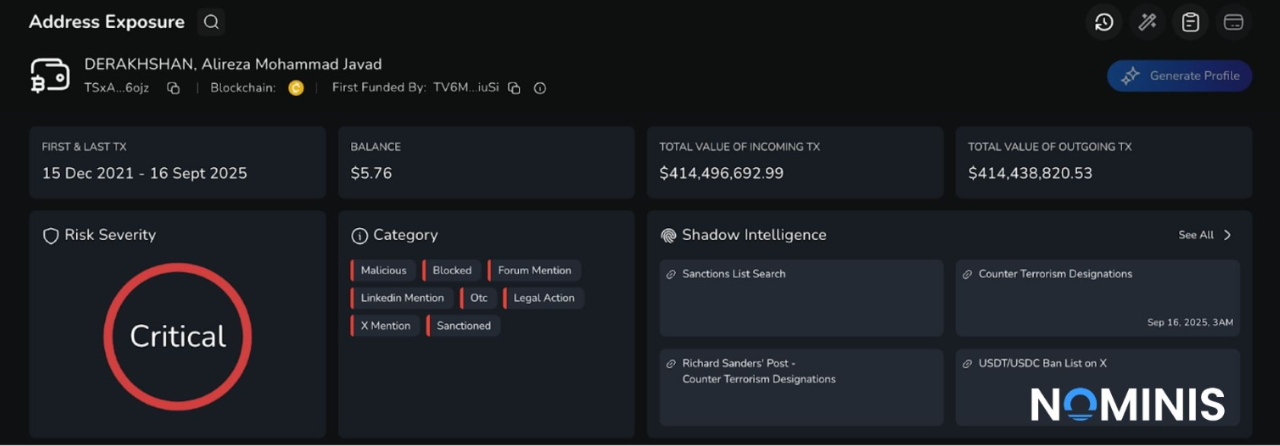

From the screenshots, we can learn that the wallet associated with Arash Estaki Alivand, an Iranian national designated by OFAC for facilitating crypto payments on behalf of the Iranian government alongside Alireza Derakhshan, exhibits a critical risk profile with multiple sanctioned and blocked connections. The on-chain activity, showing both high transaction volume ($3.5M) and cross links to other flagged entities suggests involvement in coordinated fund transfers tied to sanctioned networks. Through Nominis Vue’s intelligence layer, these indicators highlight links to counter-terrorism designations, blacklisted assets, and OTC intermediaries, underscoring how wallet profiling can reveal hidden transactional relationships and high-risk exposure patterns across jurisdictions.
Challenges and vulnerabilities
Detection and enforcement hurdles
- Identifying the beneficial ownership of front companies and shell entities is difficult given complex ownership structures, multiple jurisdictions, and purposeful obfuscation.
- Jurisdictional fragmentation: several of the hubs used (UAE, Hong Kong, free-zones) have weaker regulatory supervision or correspondent banking relationships that allow exposure to the U.S. system.
- Trade-based money-laundering remains hard to detect: large volumes, complex goods, falsified invoices and cross-border shipments make tracing origin-destination difficult.
- Crypto pathways add additional complexity: although blockchain is “transparent,” detection requires specialised analytics and tying chain activity to real-world identities, which is non-trivial.
- Once designated, front companies can be replaced, jurisdictions shifted, and networks remain adaptive.
Collateral costs and unintended effects
For banks and fintechs operating legitimately, the risk is that they may be unintentionally drawn into a value chain linked to sanctioned Iranian regimes. The burden of enhanced monitoring, regulatory compliance and reputational risk is rising. Furthermore, if enforcement focuses heavily on one pathway, the adversary may shift to another (e.g., more crypto, peer-to-peer OTCs, informal couriers).
Adaptive adversary
Iran’s regime has had years to build and refine the system. Analysts note that Iran has built “one of the world’s most adaptive sanctions-evasion machines, moving billions in oil, cash, and crypto through a shifting network of ghost fleets, offshore shells, crypto exchanges and front companies.”
Behavioral KYT red flags [ for exchanges and banks ]

Conclusion
Iran’s shadow-banking networks are not mere financial sleight of hand, they are a strategic infrastructure that sustains the regime’s revenues, regional influence, and proxy funding despite sanctions. The case illustrates how a state can build a parallel financial system, combining trade-based laundering, offshore intermediaries, and now digital assets to bypass formal oversight.
For regulators and financial institutions, Iran’s model is a warning: sanctions evasion has evolved from entity-based tactics to complex transactional ecosystems. Combating it requires real-time, behavior-driven monitoring and coordinated intelligence across chains, sectors, and jurisdictions.
Ultimately, Iran’s shadow-banking system is more than a national issue, it’s a stress test for global compliance in an era where finance is decentralized, adaptive, and increasingly borderless.
FAQs
1.Can crypto compliance tools detect this activity?
Yes. With Know-Your-Transaction (KYT) systems that analyze blockchain behavior rather than just wallet ownership. KYT can flag unusual patterns like chain-hopping, mixer use, and rapid stablecoin transfers linked to high-risk jurisdictions. By combining on-chain analytics with sanctions data, compliance teams can spot indirect exposure to Iran’s shadow networks even several hops away.
2.How much cryptocurrency has Iran moved through these shadow networks?
Public enforcement data and blockchain-intelligence estimates show that Iran-linked wallets have moved hundreds of millions of dollars in digital assets. In 2025 alone, U.S. authorities sanctioned facilitators tied to more than $100 million in crypto transactions connected to oil sales. Broader network estimates suggest Iran’s total crypto flows may exceed $4 billion in recent years.
3.What kinds of crypto assets does Iran use most?
Iranian brokers and front companies mainly use stablecoins, especially Tether (USDT), because they behave like digital dollars and are widely accepted across global exchanges. Most of these transfers occur on TRON, where transaction fees are minimal and regulatory visibility is weaker.






.png)